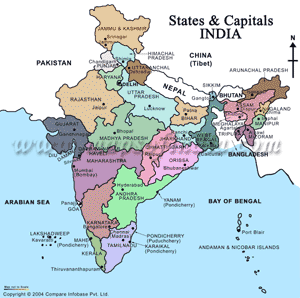
 India being a union of states with a quasi federal structure has perennially faced the requisitions for state reorganization.
India being a union of states with a quasi federal structure has perennially faced the requisitions for state reorganization.There have already been two major state reorganization exercises in India. A demand for the 3rd phase started hitting the union taking the immediate cause as a state of Telangana demand. The demands predominantly has been on the grounds that- the “mother state” is too large to be administered by a single government. the notion of decentralization contradicts with the large administering areas, lack of funds with the state government to handle its territory, the marginalized sections of the society has still remained out of focus and the poor are not getting their deserved shares.
To take all these view in totality and coming up with an umbrella decision will be quite immature.
Moreover, the decentralization part though can be dealt with reduction of state boundaries but more substantial will be creation of new districts, empowering panchayats and municipalities.
The planning commission and the NDC issue the funds to the states by analyzing the full depth of the states capacity and requirement. however if the state still finds itself short of fund, it can always appeal the centre to give it a “special state status” as being done by Bihar these days. Thus demand for a separate state on this basis can be questioned.
Marginalized group may be given attention by a state reorganization; however, it also leaves a possibility for the mental detachment of the state from the others, which have been carved out for just being poor and marginalized. Not to be missed out the possibilities of increasing disputes of sharing river waters and land resources.
The reorganization issue has not been restricted to the benevolent cause of development but also to the immense political power and monetary motives of the interest groups. Hence there is no fixed assurance of the attainment of the purpose for which the reorganization is sought. A good example being the failure of Jharkhand after its detachment from Bihar.
Furthermore, this reorganization of one state spreads the message to the remaining to shout for more reorganization. Just as UP and West Bengal started voicing their reorganization in the wake of Telangana. This could lead to further “chain reaction” for demands as there is no dearth of opinions in India.
However, if there demand proves to be genuine on the basis of the problems persisting in totality, and separation shows a better prospect, the demand could be considered.
The constitution by its structure allows a powerful central government. which has its final say in any reorganization issue. The center should be wise enough to go through all the parameters and consider this issue so that there extends a peace, harmony, integrity and development in all the geographical extents of the country.

Brilliant and crisp. This is by far,one of the most well-balanced articles on re-organization conundrum. Immensely informative and concise!